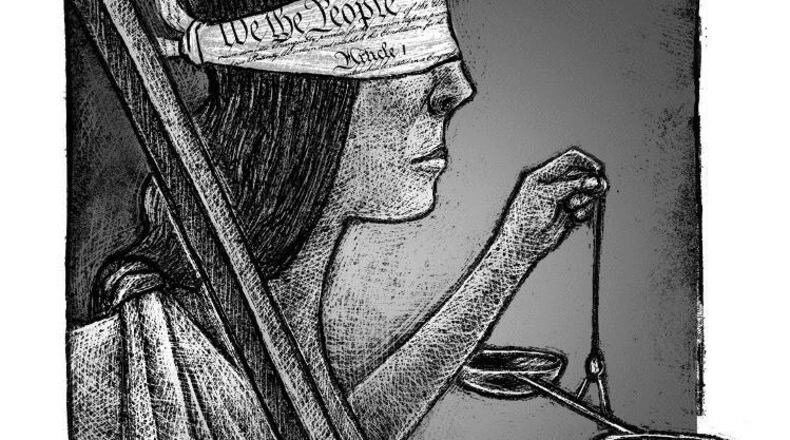In contrast to the conventional, punitive model of criminal justice, restorative justice prioritizes healing of victims, accountability of offenders and reconciliation between the two. My personal journey presents a poignant example of why restorative justice is indispensable for the betterment of our society.
Restorative justice recognizes that crime often stems from deep-rooted social, economic, and psychological issues. Growing up in an apartment complex in Newnan, I witnessed firsthand the stark reality that it can be easier to find oneself in the back of a police car than in a school classroom. Surrounded by an alternative school, a graveyard and housing projects, our community was akin to living in a suffocating box, devoid of exposure and opportunities. The criminal justice system, fixated on punishment, fails to address underlying causes and circumstances that often lead to crime, resulting in a cycle of reoffending.
It is crucial to clarify that these circumstances cannot serve as excuses for committing crimes and offender accountability remains a hallmark of restorative justice. Nevertheless, comprehending these circumstances can offer insight into why individuals find themselves in compromising situations. Restorative justice strives to understand and rectify these underlying causes and circumstances, at least on the individual level, granting offenders the chance to confront their actions and embark on a journey of rehabilitation.
Credit: contributed
Credit: contributed
This transformative approach not only holds offenders accountable but also actively works towards prevention of future offenses and protection of our society.
Several years ago, I bore the label of inmate number 1223990 in Lowndes State Prison after being convicted of robbery and burglary. Last October marked a new chapter in my life. I was sworn in as an assistant solicitor general for our Second Chance Diversion and Accountability Program by Fulton County Solicitor General Keith Gammage. Mr. Gammage not only advocates for restorative justice but also practices it: Prior to my employment, he contacted and consulted with the victims who were affected by my past criminal behavior. Ultimately, they served as catalysts that propelled me into my new role, demonstrating the healing, accountability and reconciliation of restorative justice in action.
To truly understand a person and how he might benefit from restorative justice, we must view him whole, rather than reducing him to a single mistake. It takes minutes to commit a crime. Focusing on such brief moments to define what may amount to the rest of someone’s life is a tragic flaw that restorative justice rectifies.
A significant advantage of restorative justice lies in its capacity to rebuild trust within communities. By involving all affected parties, including offenders, victims and supportive community members, restorative justice endeavors to mend relationships fractured by crime.
After committing my offense, I reached out and shared with my victims the circumstances of living in that suffocating box that led me astray. While the circumstances did not justify my actions, they helped to explain how my mistakes came to pass. My victims responded with empathy and understanding, which aided in healing for them and catapulting me towards a successful reintegration into the community — including the privilege of attending law school and, now, serving the great people of this state.
Restorative justice principles do not imply that there are no consequences for committing crimes. It emphasizes the importance of focusing on individuals, rather than relying on punitive sentences to prevent crime. When restorative justice is implemented, it requires individuals involved to actively engage in the process in order to reap the benefits. Refusal to participate results in prosecution according to the law.
Offering restorative justice options amplifies the commitment of prosecutors to meet the needs of victims and ensures accountability as key aspects of any resolution.
Flaws of the punitive justice model have made the need for restorative justice urgent and apparent. Restorative justice focuses on addressing underlying causes, empowering victims and fostering stronger communities. It offers a cost-effective alternative that prioritizes healing, reconciliation and positive change. However, it is important to acknowledge that implementing restorative justice is not a quick fix and requires careful consideration and effort on the part of individuals charged.
It is crucial that we embrace restorative justice as a foundational element of our justice system as we strive for a more equitable and compassionate society.
James White III is a Fulton County Assistant Solicitor General. He attended The Ohio State University Moritz College of Law.
About the Author
Keep Reading
The Latest
Featured



